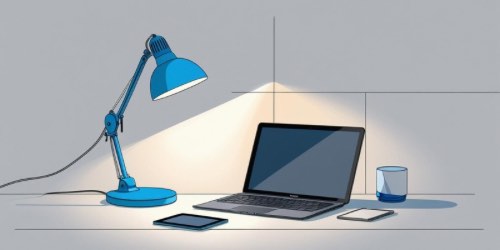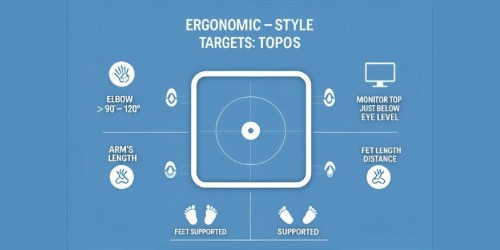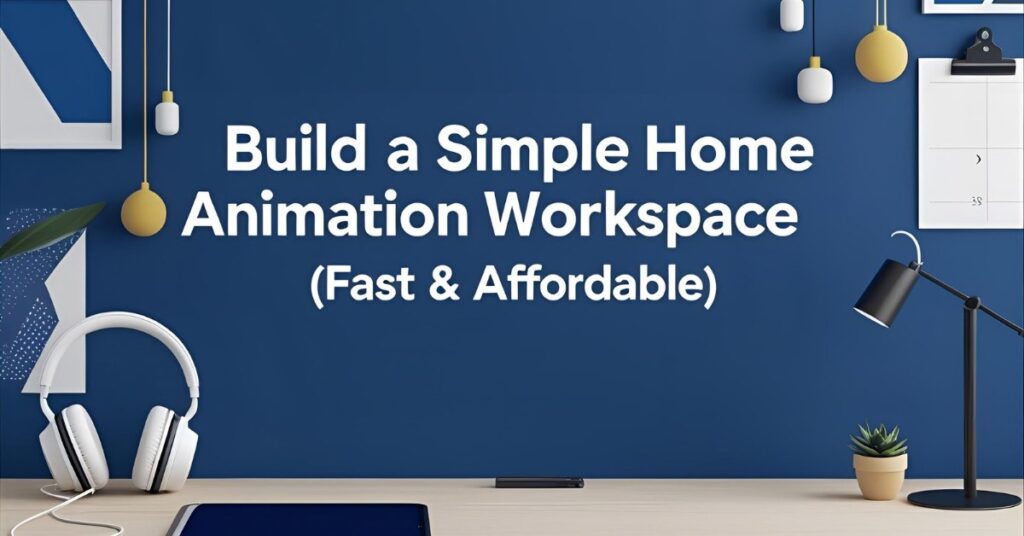Start Where You Are
I’m learning animation as an adult, and my first “studio” was a small table by a window; the gear wasn’t fancy, but the routine was, because a calm, repeatable space is what turns five free minutes into finished frames.

Ergonomics First (comfort = consistency)
Set your chair so feet are supported and elbows rest roughly at 90–120°, keep shoulders relaxed, and place keyboard and mouse directly in front so wrists stay straight; put your monitor at arm’s length with the top of the screen at or just below eye level so your neck stays neutral.
Core Setup (the minimal kit)
- Computer that runs your chosen software reliably.
- Tablet or mouse you’ll actually practice with daily.
- Headphones so timing edits aren’t drowned out by life.
- Simple task light aimed to the side to reduce glare.
- Surge-protected power strip and short, labeled cables.
The goal is a space you can reset in under a minute, because low friction keeps you practicing even on busy days.
Recommended Free Software
- Blender for 3D animation and the Grease Pencil for 2D notes.
- Krita for storyboards, background painting, and simple 2D animation.
- OpenToonz for 2D production pipelines and Xsheet timing.
- OBS Studio for quick screen captures of tests and progress reels.
Pick one tool and commit for four weeks so your muscle memory grows around a single workflow and you spend time animating, not app-hopping.

Tiny-Space Layouts (choose one)
- Window Nook: laptop or mini-PC, tablet front-and-center, lamp on the side, cable box under the desk.
- Dining Table: folding laptop stand for monitor height, roll-up mat marking “keyboard/tablet zones,” all gear in one tote.
- Stand-Friendly: monitor on arm, wireless keyboard on a tray, tablet on desk; swap sit/stand every 30–60 minutes.
Each layout keeps inputs centered and repeatable so your body remembers where everything lives and your mind focuses on motion.
30-Minute Build (from empty to ready)
- Place desk and chair, adjust height until elbows rest comfortably.
- Center monitor at arm’s length; top just below eye level.
- Align keyboard and tablet straight ahead; test wrist neutrality.
- Add lamp at ~45° to the side; kill glare and harsh shadows.
- Route power and cables; label ends; stash extras in a pouch.
Do a two-minute test: sit, breathe, open your app, and make a five-frame change; if anything fights you, adjust and try again.
Looking for tools that can make your animation learning smoother? Check this out…
Final Thoughts
Your workspace isn’t a destination—it’s a habit; start simple, make it comfortable, and let consistency—not gear—carry your animation forward.




























